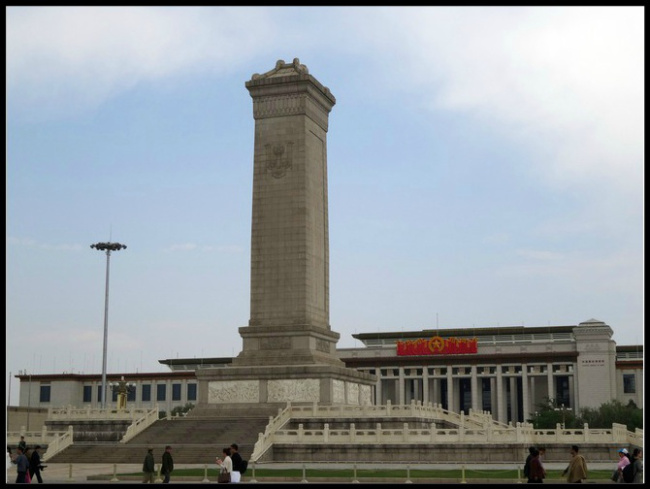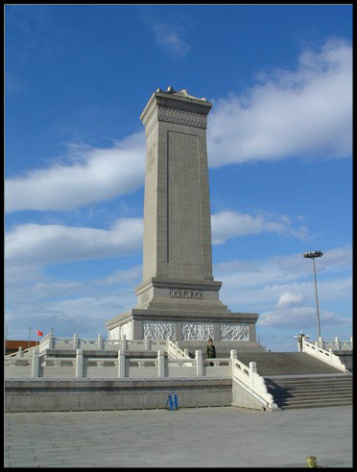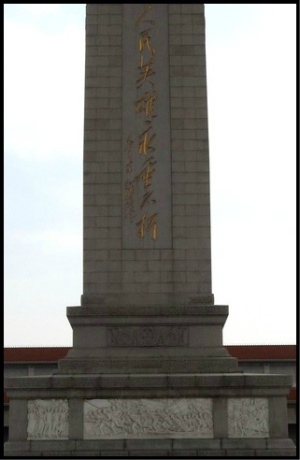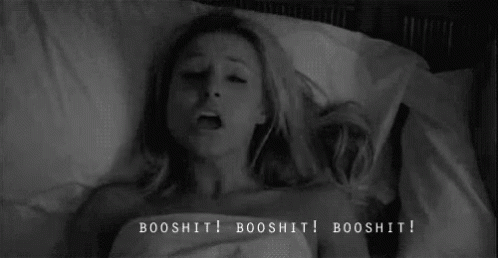
On the 30 September 1949, the day before Mao Zedong’s official proclamation of the People’s Republic of China, the first plenary session of the Chinese People’s Political Consultative Conference decreed that a monument be constructed in Beijing to commemorate the people’s heroes of modern Chinese history.
At six pm that evening Mao Zedong and a number of conference delegates attended a ground-breaking ceremony for the monument which was to be built, pretty much, in the dead centre of Tiananmen Square. While right on the north-south axis of imperialist/feudalistic Beijing, the monument is 460 metres south of Tiananmen (the gate) but only 440 metres north of Zhengyangmen making it slightly off the exact centre of the square.
While Mao got things off to a flying start, construction of the monument, designed by architect Liang Sicheng, didn’t commence until 1 August 1952 and it wasn’t completed until 22 April 1958.


The finished monument, the first large scale memorial of communist China and dedicated to the veterans of Chinese wars between 1839 and 1949, is around 38 metres high, weighs over 10,000 tonnes and contains about 17,000 pieces of Chinese marble and granite.
Bas-reliefs around the base of the monument depict eight major revolutionary episodes in modern Chinese history and commemorate the heroes of communist struggles in China and all resistance to foreign influence and Imperial repression between 1839 and 1949. In chronological order, the events depicted are the:
• Burning of opium at Humen (1839), in the run-up to the First Opium War
• Jintian Uprising, the catalyst for the Taiping Revolution (1851)
• Wuchang Uprising, the catalyst for the 1911 Revolution in which rebel soldiers and civilians stormed the mansion of the local Imperial Viceroy, the last feudal dynasty in Chinese history
• May 4th Movement (1919) – the Chinese people declared war on imperialism and feudalism
• May 30 Movement (1925) – tens of thousands stormed the British Concession in Shanghai
• Nanchang Uprising (1927) against the Kuomintang
• War of Resistance Against Japan (1931-1945)
• Crossing the Yangtze River Campaign in the Chinese Civil War (1949) leading to the founding of the People’s Republic of China in 1949.
On the front of the monument, on a single piece of stone, 14.7m long, 2.9m wide and 1m thick, is an inscription in Mao Zedong’s handwriting:
“Eternal glory to the people’s heroes!”

On the back of the monument is a message, drafted by Mao Zedong and written by Zhou Enlai, the first premier of the People’s Republic of China who served from October 1949 until his death in January 1976:
“Eternal glory to the heroes of the people who laid down their lives in the people’s war of liberation and the people’s revolution in the past three years!
Eternal glory to the heroes of the people who laid down their lives in the people’s war of liberation and the people’s revolution in the past thirty years!
Eternal glory to the heroes of the people who from 1840 laid down their lives in the many struggles against domestic and foreign enemies and for national independence and the freedom and well-being of the people!”
By way of explanation – the “past three years” refer to Chinese Liberation War (1946-1949), the “past thirty years” refers to the New Democratic Revolution from the May Fourth Movement in 1919 to the end of the revolution with the creation of the People’s Republic in 1949 and “from 1840” dates the beginning of the period covered back to the First Opium War.
In the 1989 Tiananmen Square protests the Monument was a rallying point for protesters. Since this it has been off limits to visitors who must now view it from behind a protective barrier. Given the size of the thing this is not a problem!
This blog entry is one of a group (loop) of entries based on a number of trips to Beijing. I suggest you continue with my next entry – Chairman Mao Memorial Hall – or to start the loop at the beginning go to my Beijing Introduction.
Advertisements Share this:




